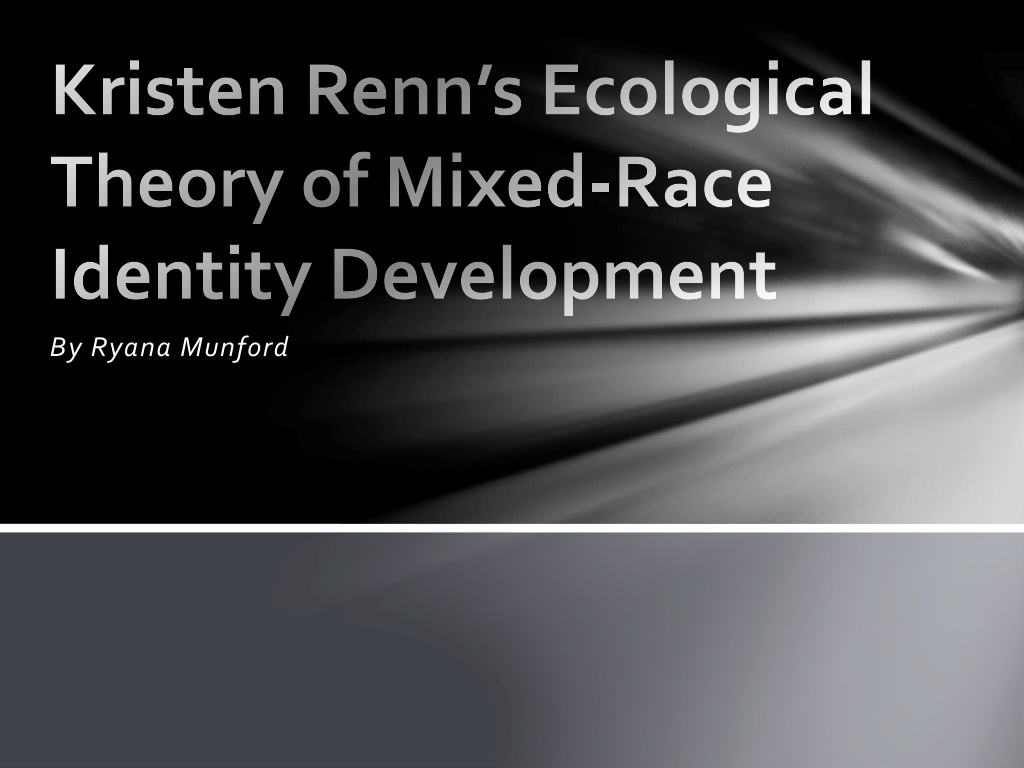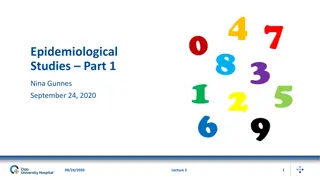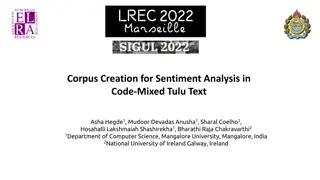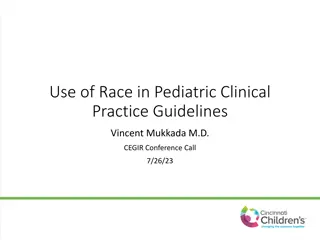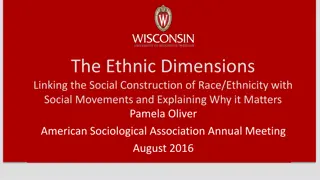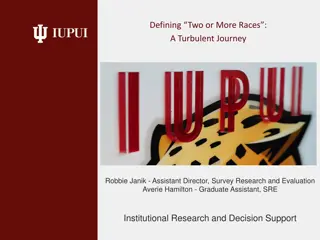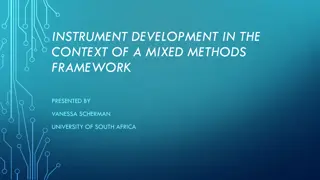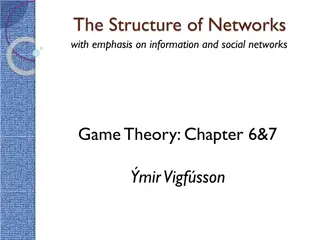Kristen Renn's Ecological Theory of Mixed-Race Identity
Dr. Kristen A. Renn, a professor at Michigan State University, specializes in research on student success, identity development in higher education, and LGBTQ issues. Her work sheds light on the history and development of mixed-race identities in the U.S., exploring the impact of social constructs and legal changes. Through her study of mixed-race undergraduate students, Dr. Renn offers valuable insights into their experiences and challenges within the education system.
Download Presentation

Please find below an Image/Link to download the presentation.
The content on the website is provided AS IS for your information and personal use only. It may not be sold, licensed, or shared on other websites without obtaining consent from the author.If you encounter any issues during the download, it is possible that the publisher has removed the file from their server.
You are allowed to download the files provided on this website for personal or commercial use, subject to the condition that they are used lawfully. All files are the property of their respective owners.
The content on the website is provided AS IS for your information and personal use only. It may not be sold, licensed, or shared on other websites without obtaining consent from the author.
E N D
Presentation Transcript
Kristen Renns Ecological Theory of Mixed-Race Identity Development By Ryana Munford
Dr. Kristen A. Renn B.A in music and pyschology from Mount Holyoke College in 1986 Ed.M in Education Leadership from Boston University in 1988 Ph.D in higher education from Boston College in 1998 Professor of Higher, Adult and Lifelong Education in the Department of Educational Administration at Michigan State University Associate Dean of Undergraduate Studies Director for Student Success Initiatives Co-PI of the National Study of LGBTQ Student Success. Associate Editor for International Research and Scholarship for the Journal of College Student Development.
Research Interests Student Success and Persistence Identity and Identity Development in Higher Education Mixed Race College Students Women in Higher Education Lesbian, Gay, Bisexual and Transgender Issues in Higher Education
Awards and Accomplishments Standing Committee Advocate Award, American College Personnel Association, 2013 A Senior Scholar of the ACPA-College Student Educators International and a past member of the governing board Elizabeth Topham Kennan Award for Outstanding Accomplishment in the Field of Education, Alumnae Association of Mount Holyoke College, 2011 Research Recognition Award, Standing Committee for Lesbian, Gay, Bisexual, & Transgender Awareness, American College Personnel Association, 2008 Excellence in Teaching Award, College of Education, Michigan State University, 2005.
History Of Mixed Race in the U.S. In the eighteenth and nineteenth century, the one drop rule was used to determine who was white and who was not. The purpose of the one drop rule was used to maintain white racial purity. During slavery and the Jim Crow era the one drop rule was used to strengthen boundaries between blacks and whites. The first mulatto unions date back to the seventeenth century in the British Colonies. Laws preventing miscegenation were eliminated after a 1967 Supreme Court Ruling. The number of interracial marriages increased from 651,000 in 1980 to 1,464,000 in 2000. (U.S. Census Bureau, 2002).
About the Study Conducted a study of 56 mixed race undergraduate students on 6 college campuses in the Northeast and Midwest A mix of public, private, small, midsized and large Highly selective, selective, nonselective Community college, liberal arts, comprehensive, and research institutions Utilized a developmental ecological framework. Influenced by Urie Bronfenbrenner Participants drawn from the population of students who had lived in residence halls most of their college experience and who lived away from home while in college Collected data through individual interviews, written responses by participants, a focus group, observations and archival observations Purpose was to understand more about how mixed race students identified, and how it pertained to higher education policy and practice
Five Identity Patterns Patterns are not exclusive or permanent Patterns are not ordered sequentially It is impossible to hold one monoracial identity forever and always and also identify situationally All other identity patterns are compatible All identity patterns are healthy
Monoracial Identity Identifies strongly with one of their monoracial or ethnic backgrounds Students with one white parent and one parent of color are most likely to identify with parent of color Of the 56 students interviewed, 27 or 48% identified as monoracial Men were more likely to identify as monracial than women
Multiple Monoracial Identity Identifies with both parent s monoracial backgrounds and is knowledgeable about both Participates in activities connected to both cultures Usually identifies with a specific ethnic group rather than white (Italian, German, French) Peers play a role in ability to identify with multiple identities Twenty-seven students identified with this identity pattern. Women were more likely than men to identify with this pattern
Multiracial Identity Students in this pattern identify as mixed, multiracial, biracial or multicultural (self-labled) They don t identify in a monoracial category Can be public or privately held Common experience with other mixed race students regardless of background Fifty of the 56 students studied identified as biracial in some way
ExtraracialIdentity Choose not to adopt a racialized identity Resisted outside identity categories Thirteen students identified with this pattern Four of these students grew up outside the U.S. No students interviewed identified exclusively with this pattern Difficult to maintain on campuses organized by racial identity
Situational Identity Identify differently in different situations and contexts Identify in more than one identity pattern Students in this pattern think of identity as fluid Thirty-four of the 56 students identified with this pattern All 13 students who identified as Extraracial also identified in this pattern as well Women are more likely than men to identify with this pattern
Findings Achieving a singular racial identity is not necessarily reasonable or desirable Various identity patterns and combinations were found Women identified with more identity patterns than men All 8 students who occupied 1 identity pattern were men Students with 2 parents of color were less likely identify Monoracial Students with on Latina/o or Hispanic parent and one white parent were most likely to identify with a Monoracial Identity Students with one black parent and one white parent least likely to hold Extraracial Identity Pattern
Distribution across Identity Patterns by Heritage Monoracial Multiple Monoracial Multiracial Extraracial Situational Avg 2parents of color (12) 4 8 10 5 11 3.17 (33%) (75%) (83%) (42%) (92%) 1Asian + 1 White parent (16) 8 8 15 2 9 2.63 (50%) (50%) (94%) (13%) (56%) 1 Black/ 1White (13) 6 5 13 1 7 2.46 (46%) (38%) (100%) (8%) (56%) 1 Latino/1 white (5) 5 0 2 1 0 1.60 (100%) (40%) (20%) 1 Pacific Islander/1 white parent (7) 3 4 7 3 5 3.14 (43%) (57%) (100%) (43%) (71%) 1 mixed/1 white parent (3) 1 2 3 1 2 3.00 (33%) (67%) (100%) (1%) (67%) total=56 27 27 50 13 34 2.70 (48%) (48%) (89%) (23%) (61%)
Distribution across Identity Patterns by Gender Monoracial Multiple Monoracial Multiracial Extraracial Situational Men (20) 12 (60%) 5 (25%) 15 (75%) 2 (10%) 8 (40%) Women (36) 15 (42%) 22 (61%) 35 (97%) 11 (31%) 26 (72%) Total (6) 27 (48) 27 (48%) 50 (89%) 13 (23%) 34 (61%)
Strengths and Criticisms Criticisms Not longitudinal Sample size per institution too small to generalize Nature of the sample Researcher s identity as a white woman Strenghts Support the need for changes in policy, program and services, and attention to elemental structural diversity pertaining to mixed raced students on campus. (Renn, 2004)
References Renn, K. A. (2014, Februray, 1). Kristen A. Renn. Michigan State University. Retrived from http://www.msu.edu/~renn/ Renn, K. A. (2004). Mixed Race Students in College: The Ecology of Race, Identity, and Community on Campus. Albany, NY: State University of New York Press. Renn, K. A. (2009). Education Policy, Politics and Mixed Heritage Students in the United States. Journal of Social Issues, 65, 165-183. doi:10.1111/j.1540-4560.2008.01593.x Renn, K. A. (2003).Understanding the Identities of Mixed Race College Students Through a Developmental Ecology Lens. Journal of College Student Development, 44. Retrieved from http://journals.ohiolink.edu/ejc/article.cgi?issn=15433382&issue=v44i0003 &article=383_utiomcstadel
